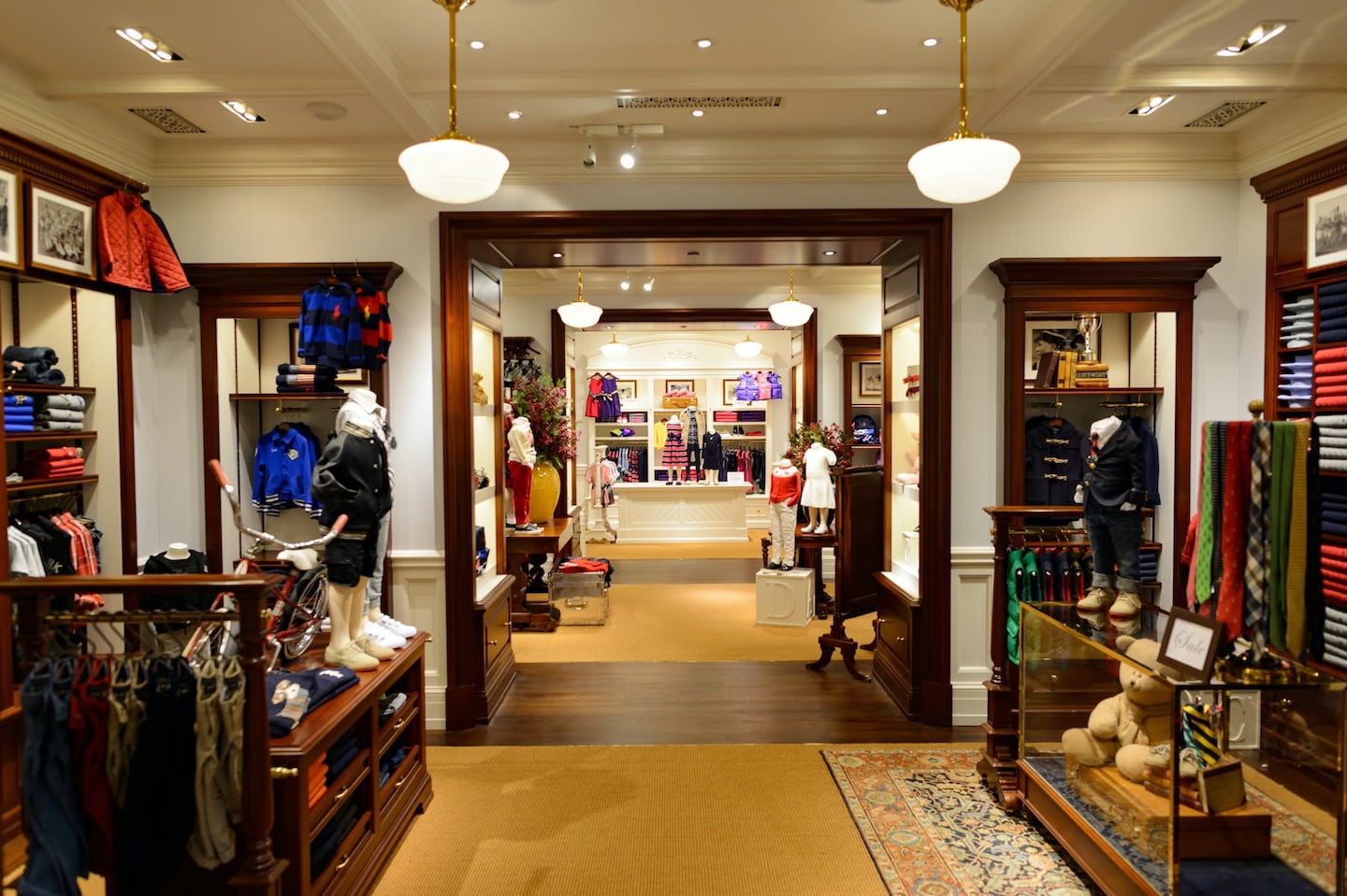
The Business of Fashion
Agenda-setting intelligence, analysis and advice for the global fashion community.

Agenda-setting intelligence, analysis and advice for the global fashion community.

NEW YORK, United States — Give Ralph Lauren Corp. credit for at least one thing: Its executives know exactly what its problems are.
The apparel behemoth is working to speed up its supply chain to be more reactive to fashion trends. It is dumping peripheral brands such as Denim & Supply and throwing more resources at marquee labels such as Polo Ralph Lauren.
And it is being choosier about where it sells its signature collared shirts and tailored chinos, evidenced by its decision to close underperforming stores and reduce wholesale distribution.
This pullback helps explain why the headline number in Ralph Lauren's quarterly earnings report on Tuesday looks so grim: revenue was down 13 percent compared to the same period a year earlier. The company is swallowing a bitter pill in order to get healthier.
ADVERTISEMENT
Ralph Lauren is not the only aspirational brand rethinking its relationship with department stores. Coach Inc. has been pulling merchandise out of 250 department-store locations. Michael Kors Holdings Ltd. has given less inventory to department stores and withdrawn from certain store-wide promotions.
These are logical steps to take, and they can help these brands in important ways. But Ralph Lauren and others ought to tread carefully, because the strategy has a soft underbelly.
If you consider the set of facts facing Ralph Lauren, you can see why executives want to reduce department-store shipments. When they send too much inventory to a department store, the product often ends up having to be sold on markdown. Those price cuts hurt gross margins, and they aren't great for the upscale vibe Ralph Lauren is trying to project. The clearance rack doesn't exactly scream luxury.
Meanwhile, department-store traffic has been weak as consumers flock to other shopping formats. The stores from which Ralph Lauren is retreating are largely under-performing locations that account for a tiny fraction of its sales. It won't miss those dollars terribly.
But here's where things get tricky. Even as Ralph Lauren wants to send less merchandise to department stores, it still very much needs those retailers to be vibrant, healthy businesses.
Ralph Lauren has announced it intends to slash its number of department-store distribution points by 20 to 25 percent. But even achieving that will still leave it relying significantly on that channel to generate sales.
Wholesale is often the most profitable segment of an apparel brand's business, notes Poonam Goyal, a retail analyst with Bloomberg Intelligence. Ralph Lauren got 69 percent of its operating profit from department stores and other retail partners in its latest fiscal year, according to BI data.
But if relatively luxe brands such as Ralph Lauren, Kors and Coach start appearing less in a given department-store location, the risk is that outpost becomes a sartorial desert, where foot traffic dwindles even further.
ADVERTISEMENT
These struggling locations can then drag down a whole fleet. They drain corporate resources and, importantly, create a bad impression with customers. A dumpy Macy's in a small regional shopping centre may colour a shopper's perception of the wider brand, even its tonier stores.
And that, in turn, could come back to bite the brands like Ralph Lauren, which is still plenty eager to sell handbags, dresses and sweaters at Macy's.
In other words, a department-store chain is an ecosystem. And the defection of big-name brands threatens to throw the whole environment out of balance.
Ralph Lauren recently named a new CEO, Patrice Louvet. He stepped into the job after Stefan Larsson, the retail industry star who had led Old Navy through a hot streak, left the job after a about a year and a half. Based on Louvet's remarks to investors Tuesday morning, it appears he plans to stick with the long-term operational goals laid out in the Larsson era.
Figuring out how to deal with department stores will be just one challenge on Louvet's plate. Investor confidence has eroded since before the announcement of Larsson's departure.
As Louvet figures out how to proceed doing business with department stores, he'd do well to keep in mind that the choices are not as simple as they initially seem.
The views expressed in Op-Ed pieces are those of the author and do not necessarily reflect the views of The Business of Fashion.
As the German sportswear giant taps surging demand for its Samba and Gazelle sneakers, it’s also taking steps to spread its bets ahead of peak interest.
A profitable, multi-trillion dollar fashion industry populated with brands that generate minimal economic and environmental waste is within our reach, argues Lawrence Lenihan.
RFID technology has made self-checkout far more efficient than traditional scanning kiosks at retailers like Zara and Uniqlo, but the industry at large hesitates to fully embrace the innovation over concerns of theft and customer engagement.
The company has continued to struggle with growing “at scale” and issued a warning in February that revenue may not start increasing again until the fourth quarter.